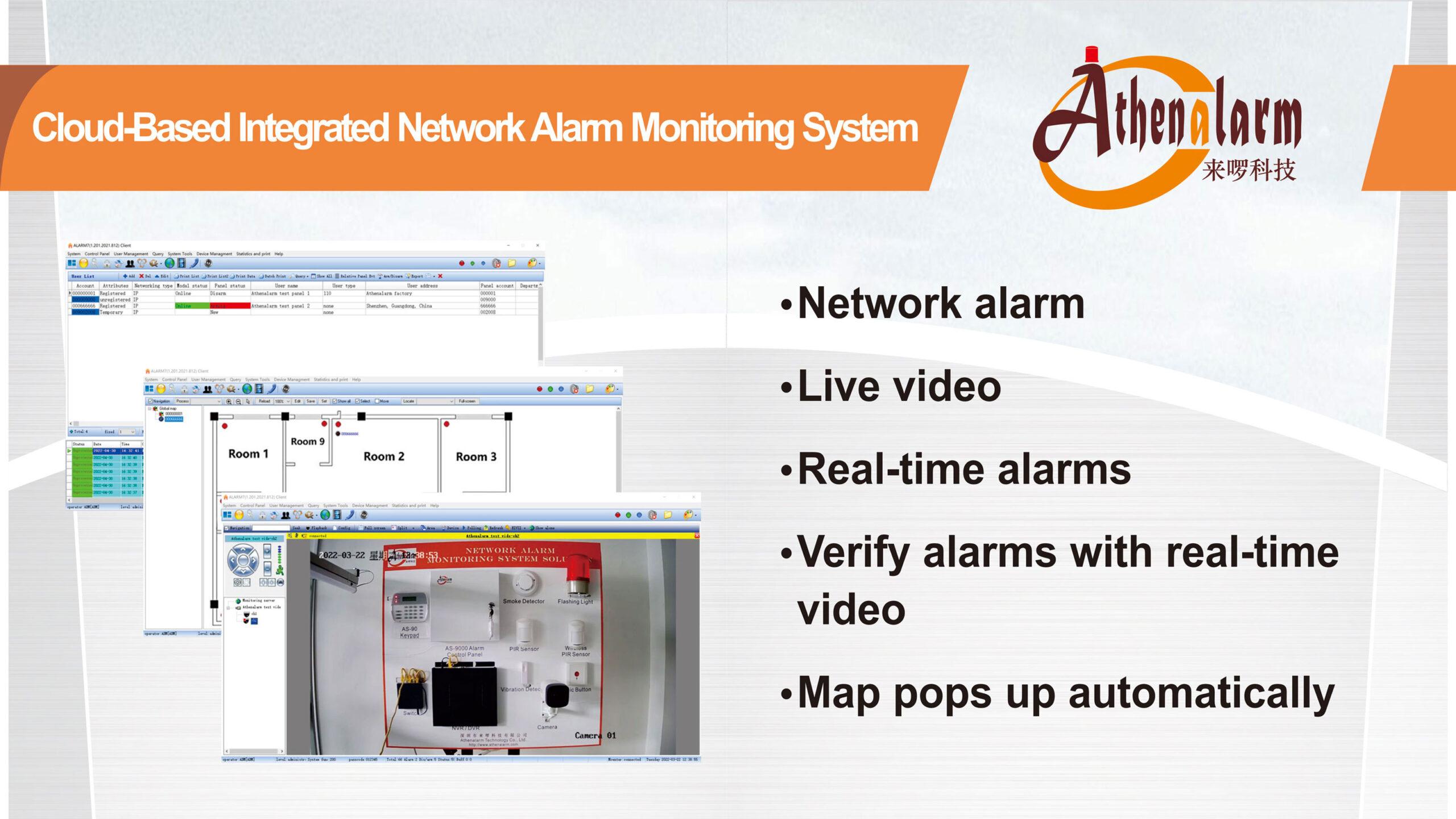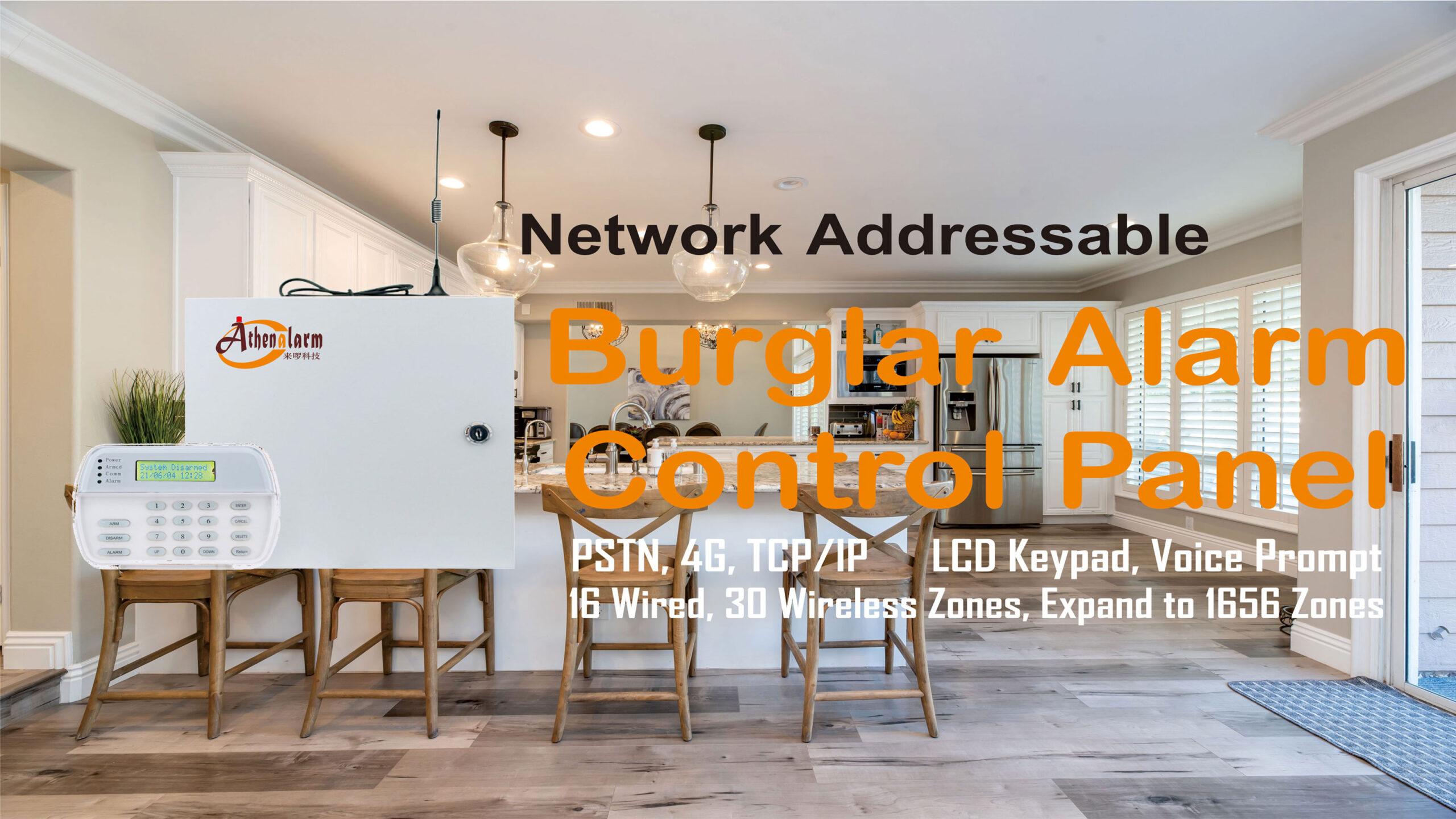



How to Choose a Home Security Control Panel?
The selection of a burglar alarm system for home should consider multiple factors such as home area, building construction characteristics, surrounding environment, and household personnel composition, among which the purchase of a home security control panel is the most important.
1 The basic composition of a home burglar alarm system
Home burglar alarm system usually consists of a security control panel, various detectors, and user operated components (keypad, remote control, etc.). It can be functionally divided into three major parts: detection part, on-site processing part, and subsequent processing part.
The types of detectors mainly include door contacts, PIR motion sensors, active infrared motion sensors, panic buttons, smoke detectors, temperature detectors, smoke detector, gas detectors, etc. These components constitute the detection part of the burglar alarm system.
The security control panel with live audio alarm and automatic dialing of preset telephone voice alarm functions, telephone lines and dedicated data lines constitute the on-site processing part and the subsequent processing part.
2 The price of home security control panel
With the rapid development of semiconductor electronic component technology, today’s home security control panels have greatly improved compared to previous years in terms of production process, product quality stability, and other aspects. There has also been a significant decrease in prices. These have created favorable conditions for the popularization of burglar alarm systems for home. It made a reality for burglar alarm systems to enter ordinary households.
3 The functions of home security control panel
Home security control panels can be divided into on-site alarms, smart phone alarms, and network alarms.
- On-site alarm is when a theft incident occurs, the detector will transmit the detected signal to the security control panel. After receiving the signal, the security control panel will emit an audio alarm sound on site to deter thieves.
- In addition to the function of on-site alarm, the smart phone security control panel can also automatically dial the user’s preset phone number. After dialing, it can play the user’s pre recorded voice and monitor the sound of the crime scene through the phone.
- Network alarm refers to the security control panel being able to transmit alarm signals to the alarm monitoring center through network transmission methods such as GPRS, 3G, 4G, TCP/IP, etc. Users can easily form a network alarm system with residential security center or alarm monitoring center by utilizing the networking function of the security control panel.
4 Selection of home security control panel
From the perspective of its installation, the home security control panels can be divided into wired, wireless, wired & wireless compatibility.
- The wired method has the advantages of reliable communication, strong anti-interference ability, and low device cost, making it suitable for newly built buildings that can reserve connection lines inside the walls. Its main disadvantages are poor mobility and inconvenience in adapting to the various requirements of users and products. It is a very tricky task to install and construct in a pre decorated room.
- The wireless method can avoid the connection line between the detector and the security control panel from damaging the indoor decoration, and has the advantages of flexibility and simplicity. Its main disadvantages are being easily affected by external electromagnetic waves and relatively high device costs.
- Wired & wireless compatible methods can be used to connect to the detector through both wired and wireless transmission. It combines the advantages of both wired and wireless methods, while overcoming their drawbacks. In areas with complex installation environments for security control panels, this is a good choice.
